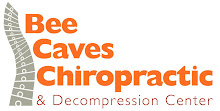Remember that song about the foot bone being connected to the leg bone, the leg bone connected to the hip bone, the hip bone connected to the back bone, and on and on from the toes on your feet to the top of your head?
Well, whoever wrote that silly song knew what they were saying. That's why chiropractors who care about your whole body will either work from the "ground-up" or the "top-down." In the article from January 29th's "Dynamic Chiropractic" publication, Mark Charrette, DC, explains the importance of Orthotic Support for the Unlevel Pelvis.
"Evaluation and correction of the pelvis is a very important part of chiropractic care. However, there are several variables affecting pelvic structural support which can interfeere with chiropracti corrections. If these variables are allowed to persist, the patient will not be able to achieve maximal response to adjustments and will become chronic. Pelvic function during daily activities is due primarily to two major joints - the sacroiliac (SI) joints. These are the joints we need to adjust and stabilize.
SI Function and Movement
The main function of the SI joints is to support the vertebral column and transmit motion and weight-bearing between the spine/pelvis and the lower extremities. A small amount of movement occurs in these joints in spite of their irregular surfaces and very strong anterior, interosseous and posterior ligaments.
In the fifth decade of life, fibrosis begins to take place between the cartilage surfaces, reducing mobility. True bony anklyosis is a rare phenomenon late in life. No muscles cross the SI joints, but the gluteurs maximus, piriformis, and long head of the biceps femoris muscles attach into the sacrotuberous ligament, and may influence joint movement and stability.
Most of the important work of the SI joint occurs during gait. The ground reaction forces generated during gait result in two specific phenomena:
* Because of the irregular contour of the joint surfaces, SI movement occurs only when there is enough force to overcome ligamentous resistance. This is thought to constitute a shock absorbing mechanism.
* When there is a difference in leg lengths, the increased ground reaction force from the longer leg causes that hip to rotate more posterior. The higher forces and repetitive stress of the SI joint may be the underlying cause of lower back pain seen in patients with a leg-length discrepancy.
The Unlevel Pelvis
Some patients have a difference in the anatomical components of the lower extremities that result in an unlevel pelvis. However, the most frequent cause of pelvic unleveling is loss of support from the lower extremity - and the foot, in particular - due to the collapse of the medial longitudinal arch. This is classified as a functional imbalance. When the foot arch drops, the leg rotates medially and the femur head drops, causing an unlevel pelvis. Excessive pronation may occur from a young age through lack of development of the arch, but most commonly occurs in later years, when the ligaments that support the arches undergo plastic deformity.
Since this process usually happens gradually, there is no significant foot pain. The patient with this condition often begins to develop chronic low back and pelvic problems, but doesn't describe any foot symptoms.
Orthotic Support
Since the pelvis and SI joints are so intimately involved in gait, it's not surprising that orthoic support for the feet is often a necessary treatment component. Orthotic support for low arches and calcaneal eversion will reduce pronation, which decreases the medial rotational stress on the SI joints. In addition, orthotic correction of a functional or anatomical leg length discrepancy will diminish the ground reaction forces being sent through the joint on the side of the longer leg. And finally, shock absorbing materials in the orthotic can diminish heel strike shock. The additional padding is necessary when there is instability, degeneration, or even an inflammatory arthritis in the SI joint.
Support with Every Step
Once a pelvic subluxation has been found, effective treatment can be planned. The first step is to evaluate the gate cycle to determine if there is any lack of support from the lower extremities. This may require accurate standing x-rays. After that, a determination of anatomical assymetry or functional imbalance will help guide chiropractic care. In many cases, orthotic support for foot pronation, knee rotation or femur angulation will be needed. Additional shock absorption can help to decrease symptoms due to degenerating joints and spinal disc. Those few patients with a true anatomical leg-length discrepancy will also need to be supplied with the appropriate amount of lift."
So, what does this mean for you?
It means that the lower back pain you feel today may start at your feet. That means you can get your back "worked on" a couple of times a month and "feel better," but until you address the real issue - an imbalance that starts with your feet - you're not going to GET BETTER. At Bee Cave Chiropractic, we offer Spinal Pelvic Stabilizers by Foot Levelers. We'll take an infrared scan of your feet and have custom orthotics made just for you.
It's just another way we're helping people Get Well and Live Well.
Wednesday, February 4, 2009
Subscribe to:
Posts (Atom)
